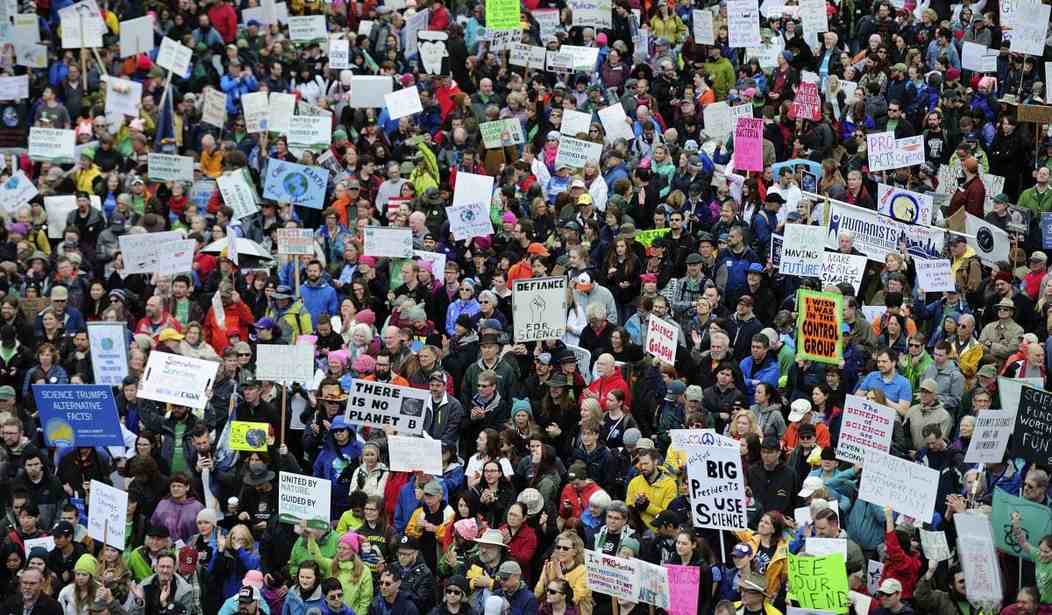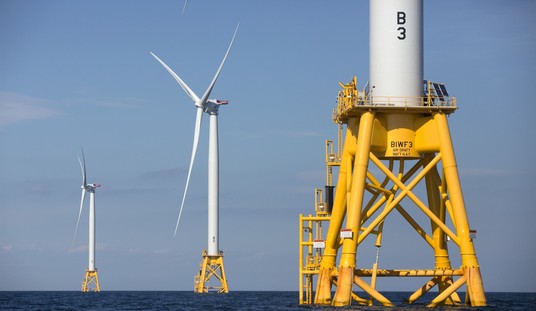Yesterday was Earth Day, a time to reflect on all the damage done by human beings to the planet.
The predictions are sobering: 75% of species on planet Earth will disappear by 2050; the temperature will continue rising, contributing to melting glaciers and polar ice caps that will eventually inundate coastal cities; the rain forest is disappearing at an alarming rate and will soon be gone; and air and water pollution are making the planet uninhabitable.
Those are just a few of the predictions made by today’s environmental movement. The bottom line: the earth is in dire straits and unless there are drastic, extreme changes, we’re all gonna die.
Or maybe not. The hundreds of thousands of people who participated in the “March for Science” yesterday were no doubt sincere in their beliefs that denying or questioning any of the predictions above makes one “anti-science.”
But if history is a guide, it is perfectly reasonable to question people who have made predictions in the past, if only because they have been spectacularly, brutally wrong.
AEI compiled a list of predictions made around the first Earth Day in 1970 that are so laughably off-base it makes one question just who is “anti-science” and who isn’t.
Here are a few of the more outrageous predictions:
1. Harvard biologist George Wald estimated that “civilization will end within 15 or 30 years unless immediate action is taken against problems facing mankind.”
4. “Population will inevitably and completely outstrip whatever small increases in food supplies we make,” Paul Ehrlich confidently declared in the April 1970 issue of Mademoiselle. “The death rate will increase until at least 100-200 million people per year will be starving to death during the next ten years.”
5. “Most of the people who are going to die in the greatest cataclysm in the history of man have already been born,” wrote Paul Ehrlich in a 1969 essay titled “Eco-Catastrophe! “By…[1975] some experts feel that food shortages will have escalated the present level of world hunger and starvation into famines of unbelievable proportions. Other experts, more optimistic, think the ultimate food-population collision will not occur until the decade of the 1980s.”
7. “It is already too late to avoid mass starvation,” declared Denis Hayes, the chief organizer for Earth Day, in the Spring 1970 issue of The Living Wilderness.
10. Ecologist Kenneth Watt told Time that, “At the present rate of nitrogen buildup, it’s only a matter of time before light will be filtered out of the atmosphere and none of our land will be usable.”
12. Paul Ehrlich chimed in, predicting in 1970 that “air pollution…is certainly going to take hundreds of thousands of lives in the next few years alone.” Ehrlich sketched a scenario in which 200,000 Americans would die in 1973 during “smog disasters” in New York and Los Angeles.
14. Ecologist Kenneth Watt declared, “By the year 2000, if present trends continue, we will be using up crude oil at such a rate…that there won’t be any more crude oil. You’ll drive up to the pump and say, `Fill ‘er up, buddy,’ and he’ll say, `I am very sorry, there isn’t any.’”
16. Sen. Gaylord Nelson wrote in Look (1970) that, “Dr. S. Dillon Ripley, secretary of the Smithsonian Institute, believes that in 25 years, somewhere between 75 and 80 percent of all the species of living animals will be extinct.”
15. Harrison Brown, a scientist at the National Academy of Sciences, published a chart in Scientific American that looked at metal reserves and estimated the humanity would totally run out of copper shortly after 2000. Lead, zinc, tin, gold, and silver would be gone before 1990.
18. Kenneth Watt warned about a pending Ice Age in a speech. “The world has been chilling sharply for about twenty years,” he declared. “If present trends continue, the world will be about four degrees colder for the global mean temperature in 1990, but eleven degrees colder in the year 2000. This is about twice what it would take to put us into an ice age.”
All of those predictions were based on the best scientific research and knowledge at the time. With the possible exception of Paul Ehrlich, who actually made a living scaring the daylights out of people, the scientists were sincere and absolutely convinced they were right when they made those predictions.
Now, there is no doubt that disappearing habitat is having a deleterious effect on the survival of many species. There is also no doubt that the rain forest is getting smaller, that air and water pollution in cities like Beijing are a threat to human health, that runoff from farms is polluting some of our ground water with pesticides, that criminally irresponsible companies dump toxic waste where they shouldn’t, and that CO2 levels are rising, although what that all means for the climate is still uncertain.
Yes, we have environmental problems. But increasing government funding for science is not going to address any of them. Intelligent public policy regarding the environment requires science that is non-politicized and agenda-free.
This will be hard. Gone are the days when an Ernest Rutherford and a couple of graduate assistants could unlock the secrets of the structure of the atom from a country house in England with only a small stipend from the Royal Academy. Science today requires huge outlays of tax dollars. Whether it’s exploring the cosmos, finding the so-called “God Particle,” or developing the latest gene therapy, most of the secrets of the universe will not be revealed in someone’s garage or basement lab.
But the tax dollars available are limited. So scientists become lobbyists. This leads to the obvious trap that scientists will tell politicians what they think they want to hear in order to get the funding necessary to continue their work.
Or failing that, frighten the beejeesus out of them, demanding they get their money or the world will end.
By definition, science in the “public interest” is now hopelessly politicized. The scientific process has thus become corrupted. When millions or billions of dollars are at stake, it becomes easier to try and personally discredit critics and skeptics than prove yourself right.
Are today’s predictions any more valid than the ones from nearly 50 years ago? Many of those hypotheses have yet to be tested or closely examined by other scientists. Others, like those related to climate change, can’t be tested because they are based on models. Predictive models are useful, but ultimately tell us more about what we don’t know than what we can prove empirically. And yet, advocates would have us dismiss the wild inaccuracy of current models and suck trillions of dollars out of the industrial economies of the west to combat a threat that may or may not be real.
This is the current state of affairs in science and it is unacceptable. Only if policy makers demand a return to real science based on observation, experiment, measurement, and the formation of a hypothesis that can be tested and verified by other scientists will we actually get our money’s worth out of science and in the process make discoveries that enlighten us and enrich the human species.









Join the conversation as a VIP Member